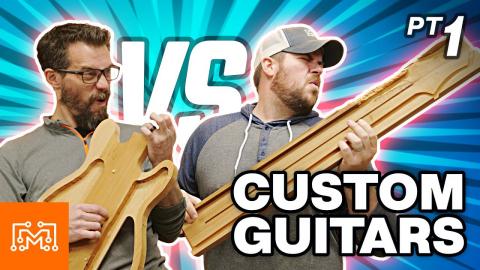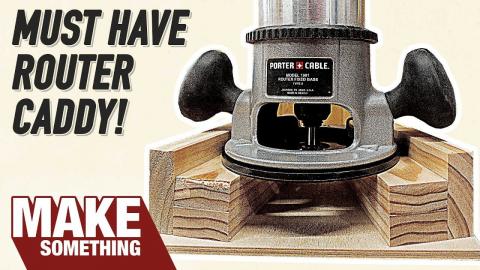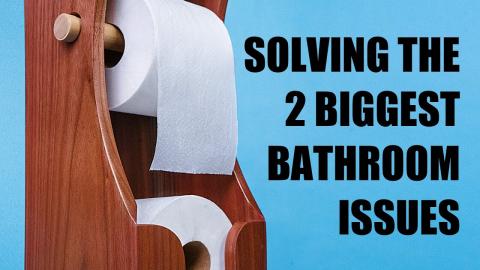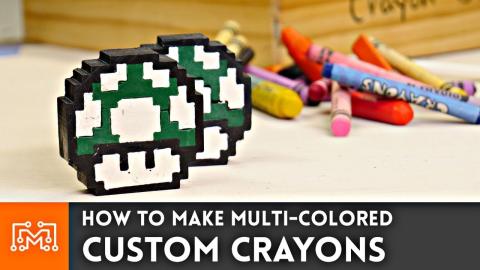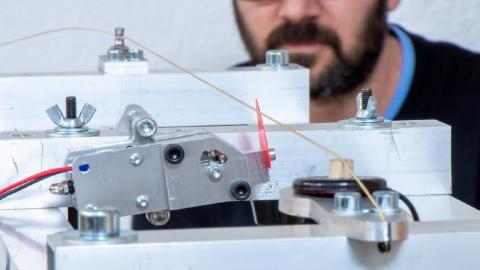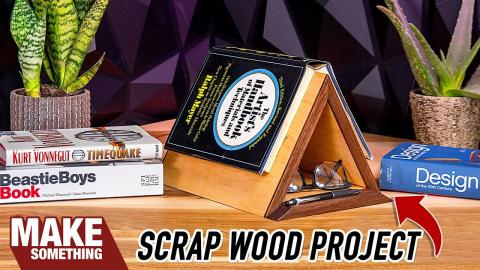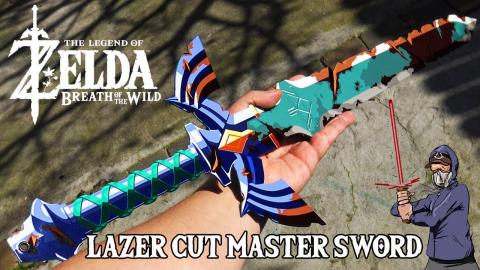How to Make a Multi Guitar Stand
Description
As many of you know, I have a lot of instruments. Lately, I've been practicing a lot more and needed a place to store all of my guitars. Instead of buying a cheap one, I made a multi guitar stand for all of my amazing instruments, and you can too! There's digital plans listed below!
DIGITAL PLANS: https://iliketomakestuff.com/shop/product/multi-guitar-stand-digital-plans/
Subscribe to my channel: http://bit.ly/1k8msFr
Second Channel: http://bit.ly/iltms-2
MORE PROJECTS, POSTS AND EVENTS
http://www.iliketomakestuff.com
TOOLS & SUPPLIES WE USED(affiliate links):
https://kit.co/iliketomakestuff/my-woodworking-tools
https://kit.co/iliketomakestuff/shop-safety-gear
I WROTE A BOOK!!
http://www.iliketomakestuff.com/makingtime
Want to support ILTMS? Get exclusive content and more...
http://www.iliketomakestuff.com/patreon
BUY A SHIRT, STICKER, NOTEBOOK, DIGITAL PLANS and MORE!!
http://www.iliketomakestuff.com/store
FOLLOW:
http://twitter.com/iliketomakestuf
http://www.twitch.tv/iliketomakestuff
http://instagram.com/iliketomakestuff
http://facebook.com/iltms
MUSIC: http://share.epidemicsound.com/iltms
For this multi guitar rack, I wanted to make the structure out of a really nice cherry wood. I had a big block of it from an old project, so I needed to mill it down to size first. We have a BITS video all about milling lumber where Josh went through the process of using the jointer, the planer, and the table saw to get really nice, square pieces of wood. I followed that process and made some square lengths of cherry that will be cut at a 75 degree angle to make up the side structure.
The overall shape of the sides will look like an invert lower-case letter "y." I used my digital protractor to transfer a 75 degree line to the wooden pieces and cut those angles on the miter saw. You could simply glue these pieces together using a butt joint and screws, but I wanted to challenge myself by making angled, half-lap joints. A half-lap joint is made by removing half of the material thickness and overlapping another piece with the same amount removed. There are many methods of accomplishing this angled joint, like a vertical jig on the table saw, but I decided to use the bandsaw and a hand saw. With each joint cut, I gathered the other components to assemble and started drilling the holes for the crossmembers and the mounting hardware.
With the side structures now prepped and glued together, it was time to assemble the bottom crossmembers and the top holder bar. To connect the bottoms, I wanted to use some leftover 1-1/4" poplar dowel. I glued the two lengths of dowel into the holes I drill in the side structures. For the top bar, I found some 30mm aluminum extrusion left over from the Roof Rack project. This would work really well because I could slide the guitar neck holders around to make room for more instruments.
Before I mounted the top bar, I made sure to slide in the extrusion t-nuts into the channels because I wouldn't be able to once it was attached. Then, using some button-head hardware, I attached both sides of the extrusion to the upper side structures and the multi guitar rack was assembled. I then added some rubber feet to the bottom so that it sat up off the ground, making room for the guitars' strap nut. Now it's time to make the guitar neck holders!
Now that the multi guitar stand's structure was completed, it was time to make the individual holders for each guitar neck. I used the same cherry wood and drew out an easily repeatable template. Using a forsner bit and the bandsaw, I cut out some U-shaped holders with a mounting hole in the middle. I was told in a previous video that foam, over time, could mess up the finish on guitar necks. To combat this problem, I decided to line the inside of each holder with a strip of dyed leather. This provides some padding and protection to each guitar neck. After some simple beeswax finish, I used some 1/4"-20 screws to attach each holder to the extrusion's t-nuts.
I moved the rack into the studio and loaded up the multi guitar rack with all of my instruments. Using the extrusion allowed me to space the neck holders to fit each instrument, allowing me to fit more guitars on the rack. Right now, I have an acoustic guitar, a bass, and four electric guitars on the rack with room to spare! I am really happy with this design, but I plan on updating some simple things in the future. First, I want to add taller feet to make room for some longer strap nuts. Secondly, I want to wrap the lower dowels with some leather to help protect the guitar bodies and to add some friction to the bottom.
We have some digital plans available for this multi guitar stand if you want to make your own. I know you can buy cheap guitar racks, but mine can grown with my collection and it is the perfect way to display my favorite instruments.


